MEES Colloquium - Over the Years
choose a year:
Appalachian Laboratory Photo Courtesy UMCES/AL - Frostburg University Lane Center Photo Courtesy: FSU
2025 MEES Colloquium
University of maryland center for environmental science
appalachian laboratory
october 24 & 25, 2025
For 3M Poster, Research & Student Lightning Talk Winners click here.
The 2025 MEES Colloquium was held at the AppalachianLaboratory on Friday, October 24 through Saturday, October 25, 2025. This event was hosted by the University of Maryland Center for Environmental Science and the MEES Graduate Program. In addition to to several workshops (Submerged Aquatic Vegetation (SAV) and Coding with LLMS, the MEES-GSO organized many events including a MEES program wide including the return of the very popular art contest and the new pet costume contest, posters session, student lightning talk sessions and a brand new long format 10 minute research talk session! There were also numerous extracurricular activities like an off campus 5K walk on Gap Trail, a nature walk at Finzel Park and more!
Many thanks to all of those who helped make this event a success particularly the Appalachian Laboratory (AL) and our very own Kyle Rufo for organizing and hosting this wonderful event!
2025 MEES Colloquium Poster presentation Winners
2025 colloquium 3M LiGHTNING TALK WINNERS
Pictured from left to right: Taylor Breton, Fariba Rostami, Sarah Endyke Photo Courtesy: UMCES/AL
Pictured from left to right: Sarah Roth, Jonathan Johnson, Qianru Liao Photo Courtesy: UMCES/AL
Qianru Liao - 1st Place
“Decision-making During Migration: How Lake Melting and Freezing Affect the Water Crossing of Caribou in the High Arctic”
jonathan johnson - 2nd place
“Landform and snowbelt influences on Holocene wildfires in the upper Great Lakes region”
sarah bomar - 3rd place.
“Healing Maryland’s Forests with Fire: Novel Methods for Evaluating Ecosystem Health in Appalachian Forests”
sarah endyke - 1st Place
“The Overlooked Role of Sulfur in Avian Movement Ecology”
fariba rostami - 2nd place
“Effect of PFAS Exposure Regimen and Soil Amendment on Soybean”
taylor breton - 3rd place.
“Greenhouse to Riverbed: Genotype-Guided Restoration of Vallisneria americana in the Hudson River Estuary”
2025 colloquium 10M research TALK WINNER
Michael Kalinowski (UMCES/HPL) Photo Courtesy: UMCES/AL
michael kalinowski - 1st Place
“A Comparison of Bioelectrochemical Tools for Sulfide Bioremediation in Oyster Aquaculture Sediments”
Horn Point Laboratory Photo Courtesy; UMCES/HPL
2024 MEES Colloquium
University of maryland center for environmental science
horn point laboratory
october 25 & 26, 2024
For 3M Poster & Student Lightning Talk Winners click here.
(2024 MEES Colloquium Photo Gallery)
The 2024 MEES Colloquium was held at the Horn Point Laboratory on Friday, October 25 through Saturday, October 26, 2024. This event was hosted by the University of Maryland Center for Environmental Science and the MEES Graduate Program. In addition to the Career in Environmental Science Panel, the Working Group Breakout Sessions, the MEES-GSO organized many events including a MEES program wide art contest, poster session & student lightning talks sessions, and extracurricular tours of the Horn Point Laboratory, Telescope viewing of Comet C/2023 A3 among other off campus trips to Blackwater National Wildlife Refuge, and the National Park Service’s Harriet Tubman Museum.
2024 MEES Colloquium Group Photo Photo Credit: Bill Dennison
2024 MEES Colloquium Career in Environmental Science Panel Session
From left to right: Megan Fitzgerald (EPA), Dr. Kari St. Laurent (NOAA), and Dr. Alia Al-Haj (SERC) Photo Courtesy: Judith O’Neil
2024 MEES Colloquium Photo Gallery







2023 MEES Colloquium
University of maryland eastern shore
hyatt place kent narrows & marina - Grasonville, maryland
March 22 & 23, 2024
For 3M Poster & Student Lightning Talk Winners click here.
The 2023 MEES Colloquium was held at the Hyatt Place Kent Narrows & Marina in Grasonville, Maryland on Friday, March 22, 2024 through Saturday, March 23, 2024. This event was hosted by the University of Maryland Eastern Shore, the University of Maryland Center for Environmental Science, and the MEES Graduate Program. There were two panels (main & career) panels, as well as a poster session & student lightning talks.
main colloquium panel speaker
TOM HORTON - writer and environmentalist
Tom Horton has covered the environment for The Baltimore Sun for over 35 years. A multiple award winning author, Tom Horton has written eight books about the Chesapeake Bay. His honors include the John Burroughs Award for the best book of nature writing, the David Brower award from the Sierra Club, and other awards from the Chesapeake Bay Foundation and the Audubon Society. Governor Martin O’Malley honored Horton as an Admiral of the Chesapeake. He currently is a Professor of Practice in Environmental Studies at Salisbury University and a contributing writer and columnist for the Bay Journal.
CAREER PANEL SPEAKERS
Dr. Steve Hughes Photo Courtesy: Cheyney University of Pennsylvania
Dr. Katrina Lohan Photo Courtesy: Smithsonian Environmental Research Center
Mr. Dave Wilson Photo Courtesy: US Wind
2023 MEES colloquium POSTER winners
2023 MEES colloquium 3M LightninG Talk winners
Pictured from left to right: Michelle Salvitti (UMES), Kayla Fairfield (UMCES/IMET), and Jens Wira (UMCES/IMET) Photo Courtesy: Judy O’Neill (UMCES/HPL)
Pictured from left to right: Abdulmajid Alrefaie (UMCES/IMET), Jens Wira (UMCES/IMET), Anne Baldino (UMCES/AL) Photo Courtesy: Judy O’Neill (UMCES/HPL)
jens wira - 1st Place
“Shedding light on Gambierdiscus: Diel Movement and Interspecies Variability”
anne baldino - 2nd place
“The future of the Blue Crab Genome Project”
Abdulmajid Alrefaie - 3rd place.
“Heterotrophic Metabolism of Acetate in the Green Microalaga Chlamydomonas reinhardtii”
Kayla Fairfield - 1st Place
“Individual Blue Crab Culture”
Jens Wira - 2nd place
“Shedding light on Gambierdiscus: Diel Movement and Interspecies Variability”
Michella Salvitti - 3rd place.
“Per- and Polyfluorinated Substances (PFAS) in the Chesapeake Bay and Maryland Coastal Bays”
BACK TO TOP
2022 MEES Colloquium
IMET Photo Courtesy: IMET
university of maryland, baltimore
university of maryland, baltimore county (co-host)
institute of marine & environmental technology (IMET)
november 18, 2022
For 3M Poster & Student Lightning Talk Winners click here.
The 2022 MEES Colloquium was held at the Institute of Marine & Environmental Technology (IMET) co-hosted by the University of Maryland, Baltimore and the University of Maryland, Baltimore County. There were two panels (main & career) panels, as well as a poster session & student lightning talks. In order to maximize interaction the MEES-GSO organized table assignments during the meal break which really fostered collaboration and conversation.
mAIN PANEL SPEAKERS career Panel speakers
Dr. Roger Ward Photo Courtesy: UMB
Dr. Janet Rutledge Photo Courtesy: UMBC
Dr. Gerhard Kuska Photo Courtesy: MARACOOS
Dr. Suzanne Dorsey Photo Courtesy: MDOE
Captain Arthur “A.J.” Reiss (ret.)
special program panels
the i-care program at umbc sustainability at uMB
Dr. Tamra Mendelson Photo Courtesy: UMBC
Elizabeth Main Photo Courtesy: UMB
Anna Borgerding Photo Courtesy: UMB
2022 MEES COLLOQUIUM STUDent POSTER & 3-M LIGHTNING TALK WINNERS
2022 MEES Colloquium lightning talk winners
Anna Windle Photo Courtesy: UMCES/HPL
1st Place - Anna Windle
Optical Classification of Water Quality in the Chesapeake Bay
ABSTRACT
Satellite remote sensing contributes to a comprehensive understanding of water quality by enabling a quantification of remote sensing reflectance (Rrs) which describes the color and brightness of water. Rrs is governed by light interactions with optically-active constituents, including phytoplankton, dissolved organic matter, and inorganic suspended sediments. This study aims to extend the knowledge of water quality trends in Chesapeake Bay through the lens of a satellite based optical classification. This statistical method identifies dominant Rrs spectra referred to as optical water types (OWTs) which were determined and mapped using 300 m multispectral satellite data. In situ water quality data were paired in space and time to assess how quality parameters are constrained within a given OWT. Results are expected to aid in the interpretation of water qulity trends, assist in remote sending algotithm selection, and potentially delineate regions not meeting management goals.
2nd Place - Miranda Judd
Miranda Judd Photo Courtesy: UMCES/IMET
Oxygen Production and Consumption in Dinoflagellates
ABSTRACT
Dinoflagellates are unicellular protists found in both marine and freshwater, and are known harmful algal bloom constituents. Many dinoflagellates are photosynthetic primary producers, but they can also be heterotrophic and mixotrophic as well, occupying various tropic levels within the same ecosystem. However, regulation and adaptation of metabolic pathways in dinoflagetllates is still relatively unknown. We have used the RESIPHER system to analyze oxygen production and consumption rates in a species. The dissolved oxygen concentrations wtihin varying cell densities of dinoflagellate Amphidinium carterae were measured over multiple days. A clear diel cycle was produced showing signifcant increases in oxygen during the light cycle, and a surprising decrease in oxygen over the dark cycles. The addition of 1 uM DCMU proved enough to completely inhibit oxygen production and respiration in S major cultures, while the A. carterae proved to be more robust.
Katherine Stahl
3rd place - Katherine Stahl
Investigating Vegatation Dieback in ditched Coastla Marshes and Restoration Potential
aBSTRACT
In some ditched coastal salt marshes, shallow mega-pools with vegetation dieback and continuous ponding are present. We are conducting an extensive study of a 40-acre marsh in the Maryland Coastal Bays to better understand the relationships between ditches and mega-pool formation. Areas without pools were compared to areas with partially and fully formed pools to explore differences. Initial results show mega-pools have lower elevation and plant cover, as well as higher temperature, salinity, sulfides and water than nearby ditches and areas without pools. We hypothesize that excavated soil paced along ditches traps water in the marsh interior, increasing soil waterlogging and plant dieback, and reducing sediment input that might offset elevation loss. To combat dieback, we will also assess the effectiveness of different types of planting in pools, and whether the construction of 12-inch channels, coined “runnels”, that reconnect mega-pools to ditches aid in restoring vegetation.
2022 MEES Colloquium poster winners
Anna Hildebrand
1st place - Anna Hildebrand
Anaerobic Oxidation of Methane (AOM) as a mechanism for the production of dissolved organic carbon: From Estuaries to seeps
ABSTRACT
Marine DOC is one of the largest reactive carbon (C) reservoirs (662 Gt C) on Earth (Hansell & Carlson, 2002) and plays an important role in the oceans to modulate CO2. While our understanding of DOC has greatly improved through discoveries such as the microbial carbon pump (Jiao, et al., 2010), our knowledge regarding sources of DOC is limited (Burdige & Komada, 2015). This project will test the hypothesis that methane-derived carbon is converted to dissolved organic matter during AOM coupled to sulfate reduction in anoxic marine sediments, and potentially coupled to iron reduction in estuarine sediments. Incubations with 13C-enriched methane will be conducted on sediment from the Chesapeake Bay and Southern Hydrate Ridge and the resultant CO2 and DOC pools will be measured. This work will clarify the role of seeps in contributing methane-derived, fossil-aged carbon to deep ocean DOC as well as fill in knowledge gaps in our understanding of DOC sources in the Chesapeake Bay.
Jens Wira Photo Courtesy: UMCES/IMET
2nd Place - Jens Wira
Gambierdiscus and Amphidinium, investigating the different swimming behaviors of benthic dinoflagellates
ABSTRACT
Here we present information on the swimming behavior of genera of benthic dinoflagellate, Gambierdiscus. Though categorized as benthic, cells of these species can release their attachment and move about in the water column using their flagella. This enables them to disperse and colonize available substrates. Previously it was thought that all dinoflagellateds could only swim in right-handed helical patterns due to their flagellar arrangement (one medial and the other radiating from the hypocone). However, work with Karlodinium veneficum demonstrated that a small proportion of individuals were capable of swimming in left-handed helices, albeit slower than those swimming in right-handed helices. In this talk, we present the motion of benthic species in the Gambierdiscus as examined using digital holographic microscopy. Gambierdiscus species are the mos frequent cause of seafood related illness in the form of ciguatera poisoning a result of the large toxins they produce. Here, we present comparisons of how G. caribaeus swim, and how they compare to what we know of other dinoflagellate swimming behaviors. This research is aimed at better understanding when and why these species swim. This information can be used to model their behaviors, and how we can use their behaviors to further understand their ecology and biology.
3rd Place - Pengzheng Yong
(c) 2022 Pengzheng Yong, Shaojun Du. Used with permission.
Ectopic Expression of Myomaker and Myomixer Induces Non-Fusogenic slow muscle fusion
Myomaker and Myomerger (also called Myomixer and Minion) play vital roles in myoblast fusion in vertebrates. In vitro analysis using fibroblast cells revealed that Myomaker is required in both cells whose membranes are destined to fuse, whereas Myomerger is required in only on eof the two fusogenic cells. The fusion ability, however, of these fusogenes on their in vivo effect is still insufficiently known. Given that slow myoblasts in zebrafish do not express endogeneous Myomaker and Myomerger and do no fuse normally, we used slow muscle specific promoter (smyhc1) to drive Myomaker or Myomerger expression and created Tg(smyhc1: Myomaker) and Tg(smyhc1: Myomerger) transgenic fish to analyze cell fusion in vivo. We found either ectopic expression of Myomaker or Myomerger could drive the myoblast fusion in slow muscles of zebrafish embryos.
BACK TO TOP
2021 MEES Virtual Colloquium
University of Maryland, Eastern Shore
October 21, 2021
3M STUDENT TALK WINNERS
Isabel Sanchez-Viruet Photo Courtesy: UMCES
Isabel Christina Sanchez-Viruet (1st PLACE WINNER)
Floating Wetlands and Their Potential for Nitrogen Removal in Estuarine Waters
Satishkumar, Nidhi (2nd PLACE WINNER)
PBP4 Associated Beta-lactam Resistance in Clinical Strains of S. aureus
Xu, Lan (3rd PLACE WINNER - TIE)
Producing Infertile Salmonidae fish for Aquaculture by an Immersion-based Gene-Silencing Technology
Wira, Jens (3rD PLACE WINNER- TIE)
Digital Holography for Dinoflagellate Swimming Behavior
BACK TO TOP
2020 MEES Virtual Colloquium
OCTOBER 16, 2020
Chesapeake Biological Laboratory
WEBSITE (MAY NEED PERMISSION)
BACK TO TOP
MEES COLLOQUIUM 2019
Institute for Marine & Environmental Technology
Baltimore, MarylanD
october 4 and 5, 2019
Alterra Sanchez. Photo Courtesy: Maryland Sea Grant
MEES 2019 Colloquium Student Poster Winner -
alterra sanchez
Analysis of Surface Area of Standardized “Weathered” High-Denisity Polyethylene and plypropylene microplastics using the Burnauer-emmett-teller method with krypton”
It is known that ingestion of microplastics (MPs) may cause deleterious effects, but is unclear how large a role MP’s play as an exposure route to organic contaminants (OCs). Many studies have tried to address this issue, but there has been much criticism for environmentally irrelevant experiments. Additionally, ecologically relevant experiments have not used standardized MP’s and have shown mixed results. There is a clear need of standardized methodology for testing toxicity of MPs and associated OCs. An integral part affects sorption. Therefore, the objective of this study was to develop a methodology to fabricate irregularly shaped MPs of with a standardized surface area on a mass basis.
BACK TO TOP
MEES Colloquium 2018
MEES Colloquium held at the Appalachian Laboratory (AL), UMCES
The 2018 Poster winner is Anna Kottkamp. Congratulations!
Anna Kottkamp is a second year Master's student in the MEES program, co-advised by Dr. Margaret Palmer and Dr. Katherine Tully. Anna is a Graduate Research Assistant with the National Socio-Environmental Synthesis Center (SESYNC). Her research project focuses on the mechanisms of soil carbon sequestration in seasonal wetlands. In other words: why does carbon stick around in wetlands that aren't always wet? She is broadly interested in the biogeochemistry of terrestrial-aquatic interfaces, the impacts of altered ecosystem function on communities, and science education.
BACK TO TOP
MEES Colloquium 2017
MEES Faculty and Students came together for a weekend of fun at the MEES Graduate Program 2017 Colloquium hosted by the University of Maryland Center for Environmental Science- Horn Point Laboratory. We would like to congratulate the presentation awardees:
Posters: Wenfei Ni and Miranda Marvel
Elevator Pitches: Anna Davis and Virginia Weeks
Three Minute Powerpoint: Shadesha Green
Tech Enabled: Juan Alvarez
Art/Funny: Maureen Brooks
MEES Colloquium 2016







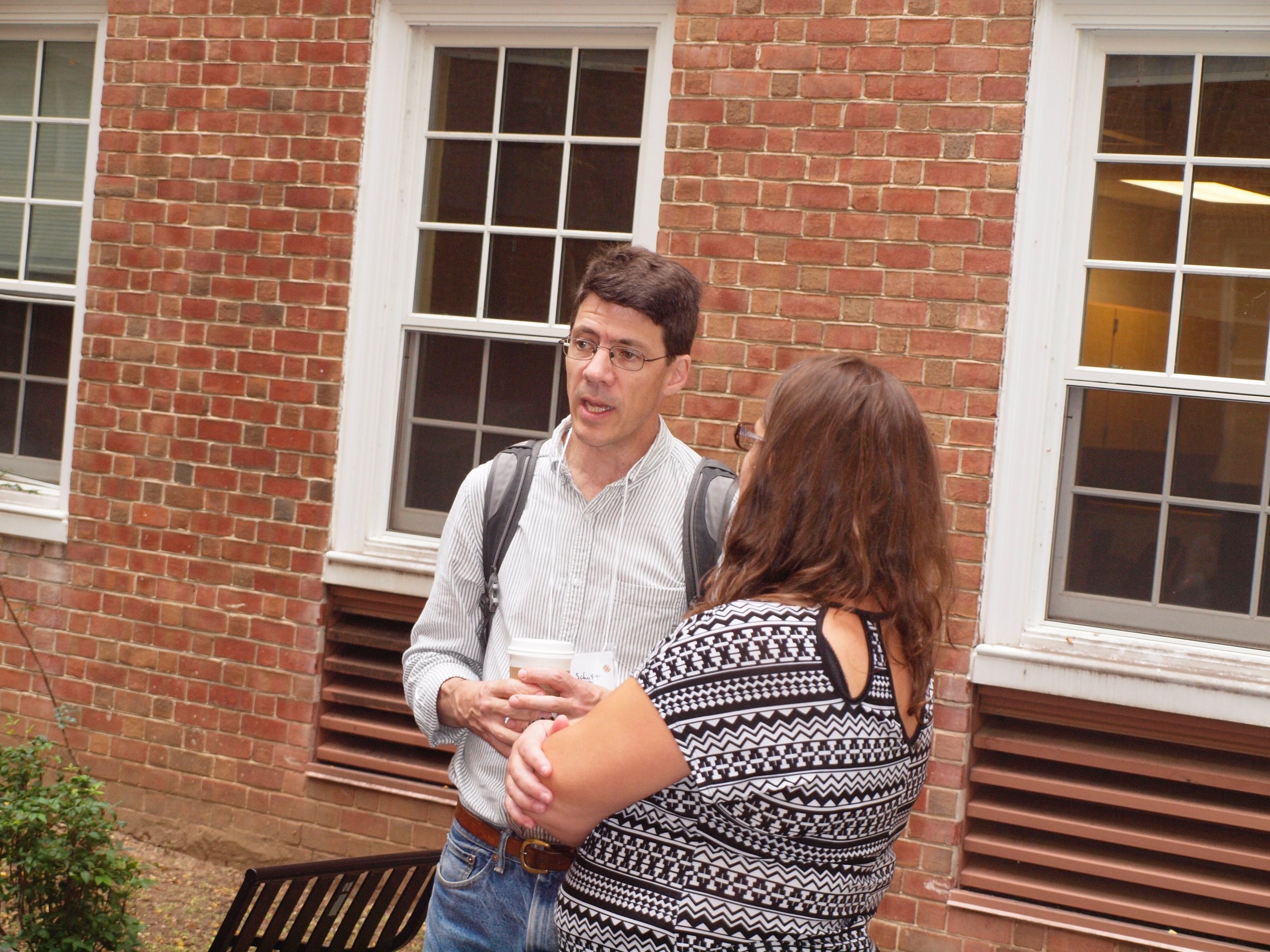

















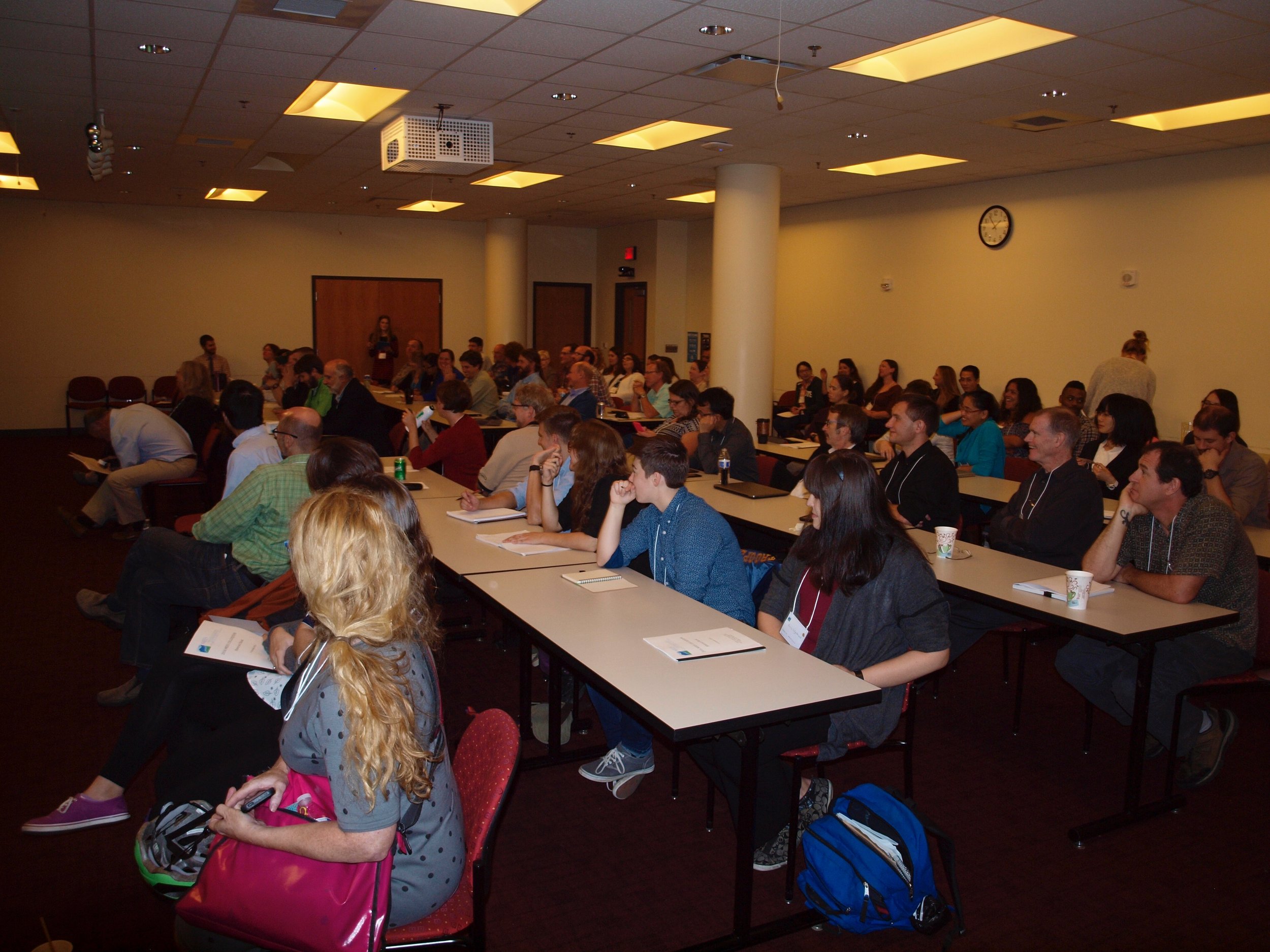



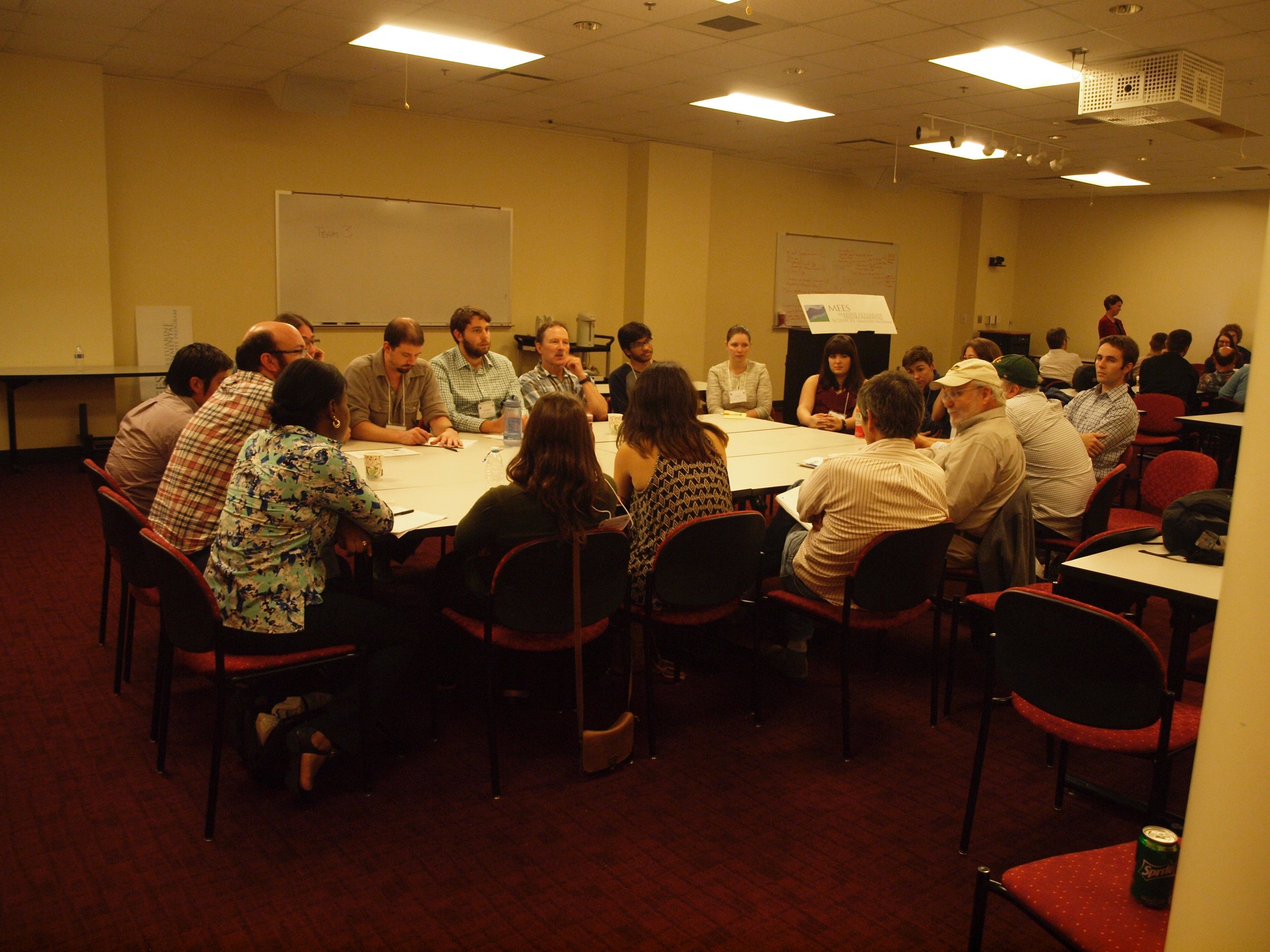

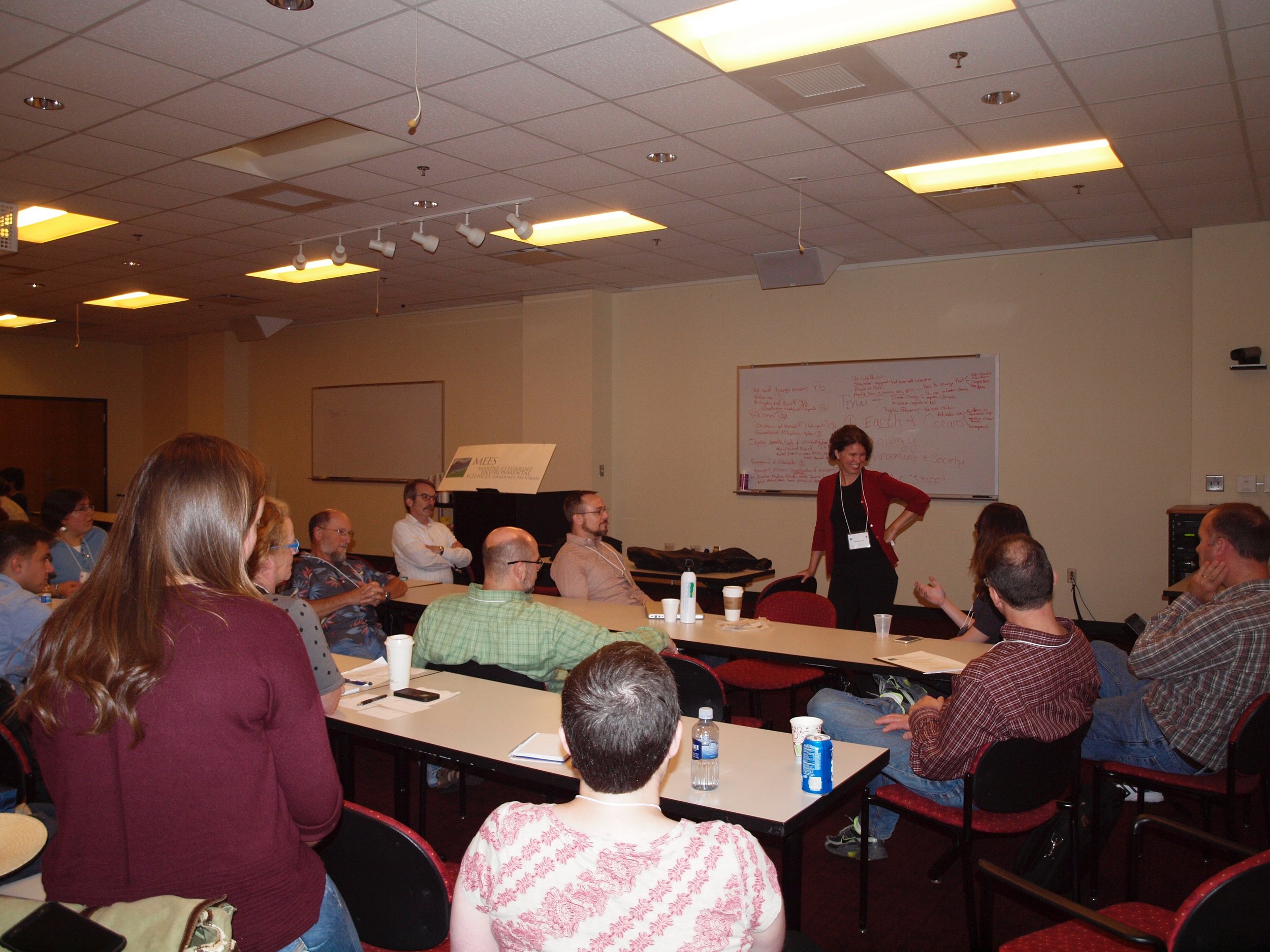














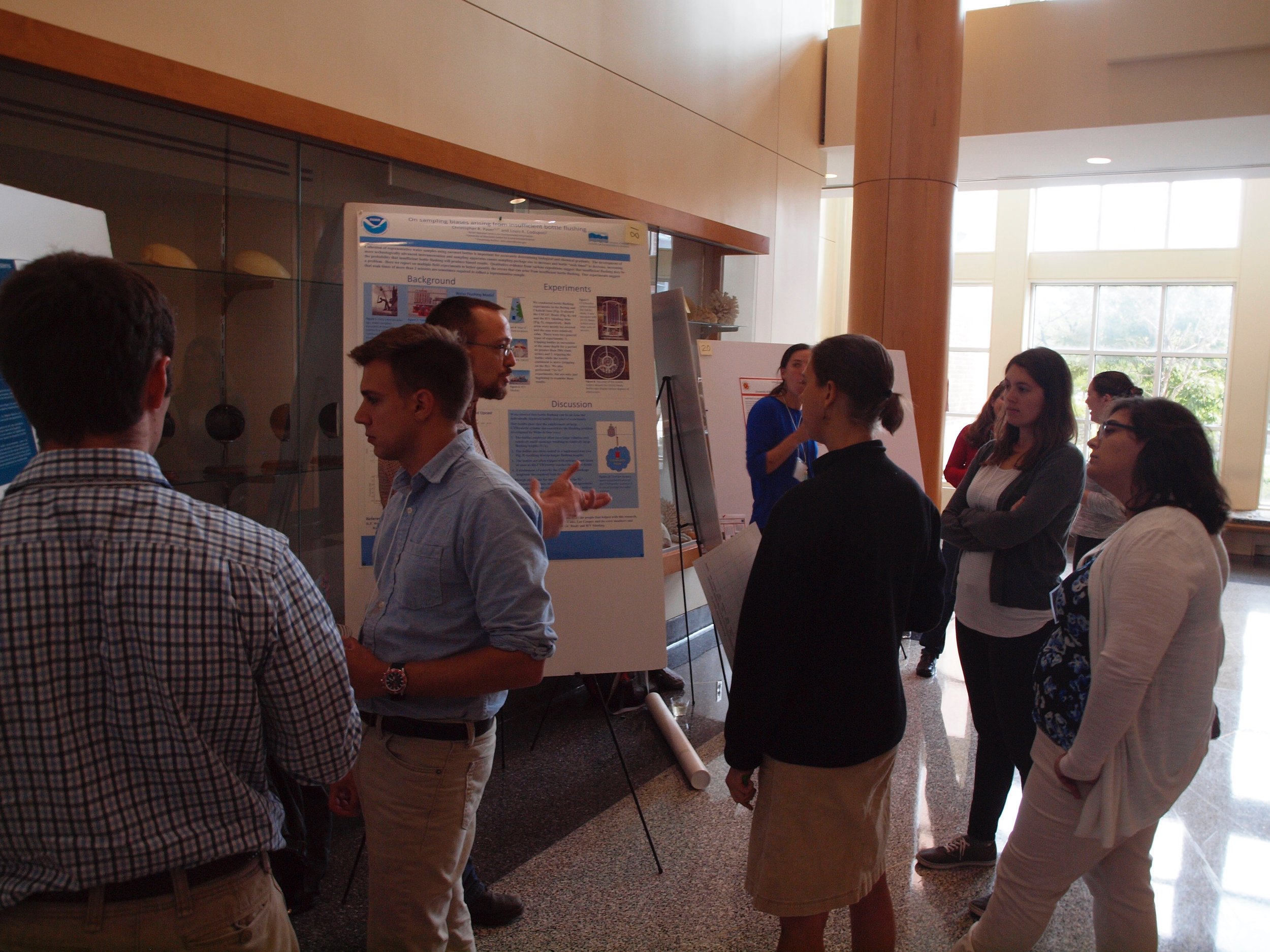




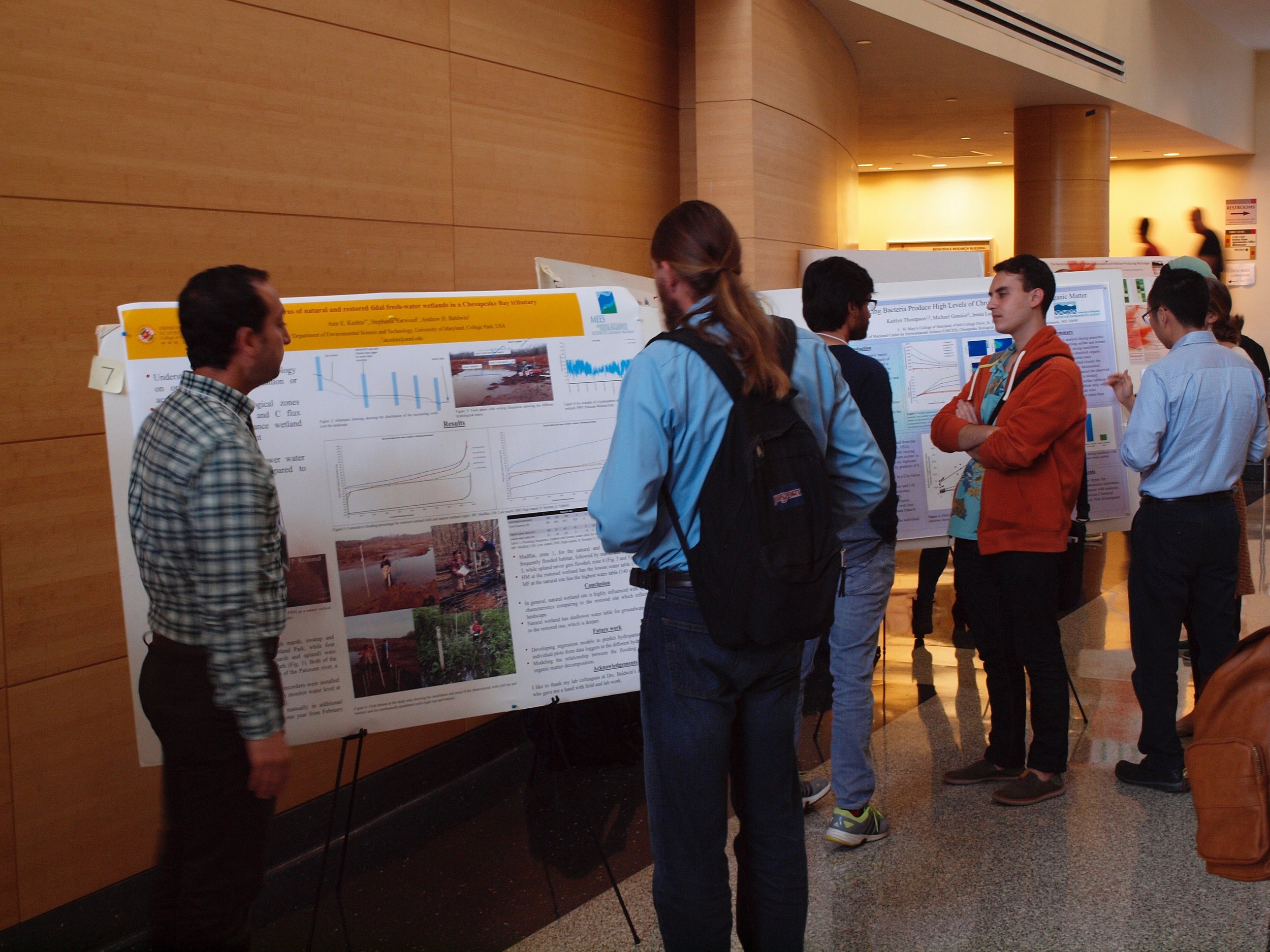









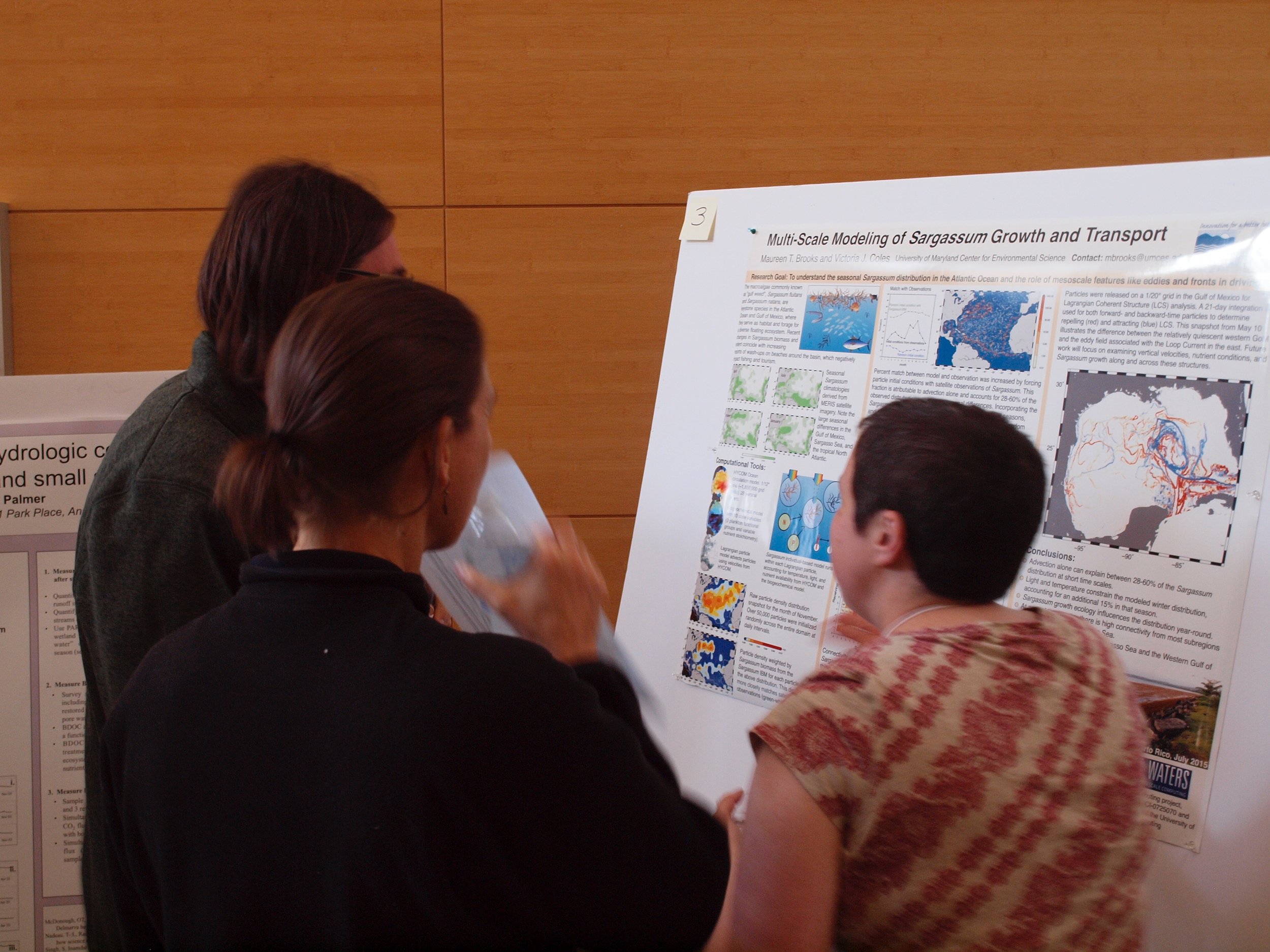






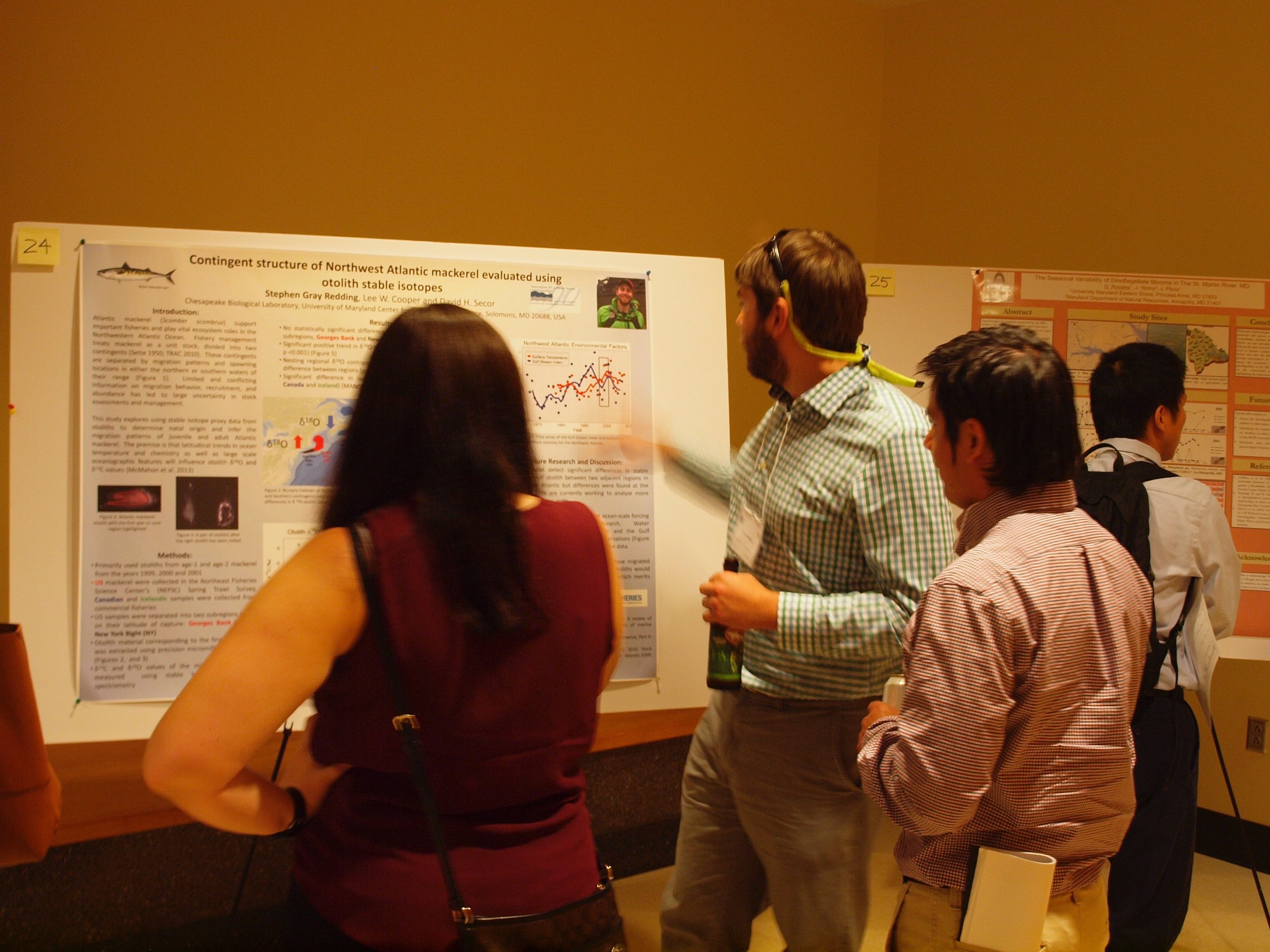
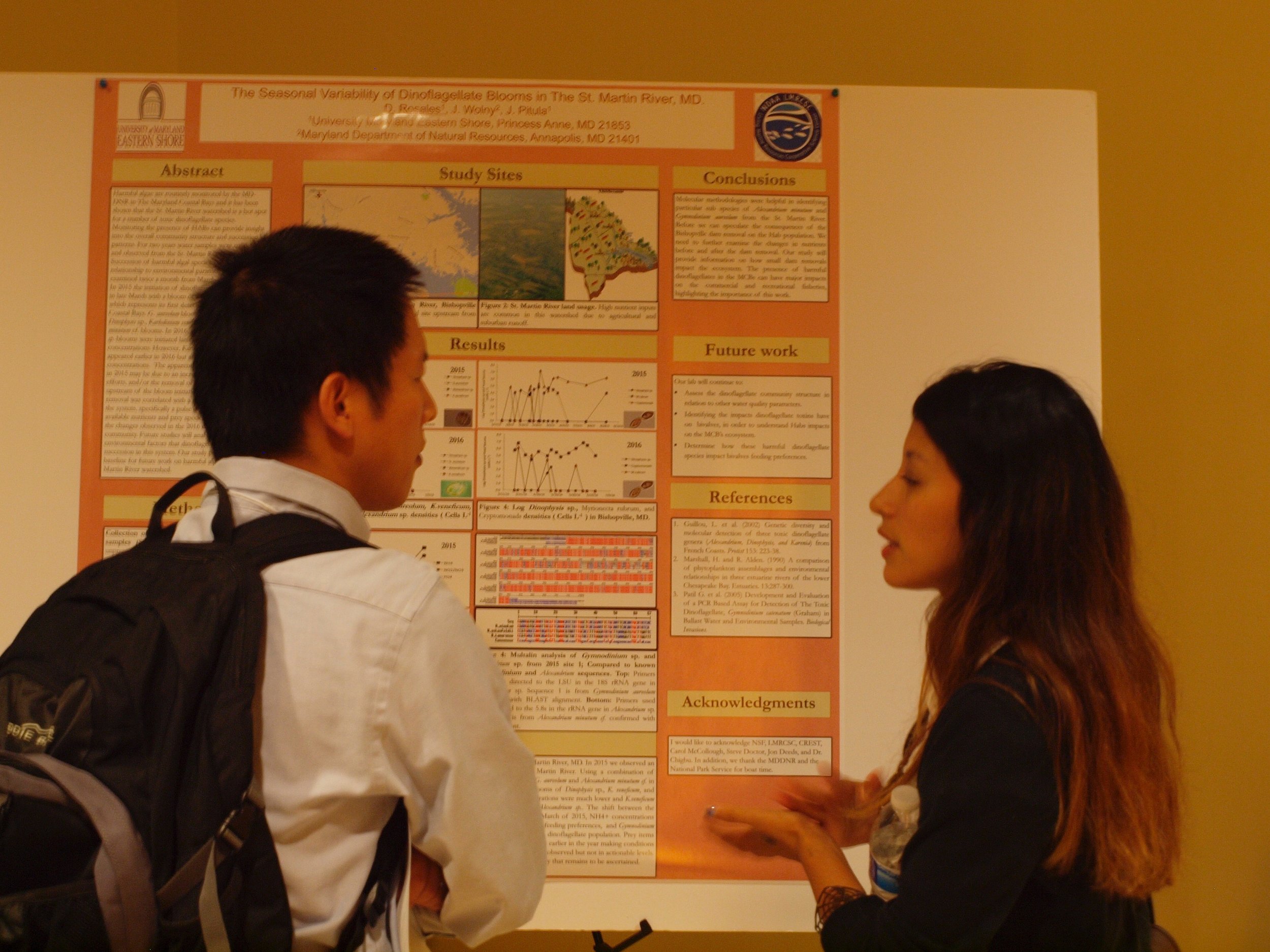


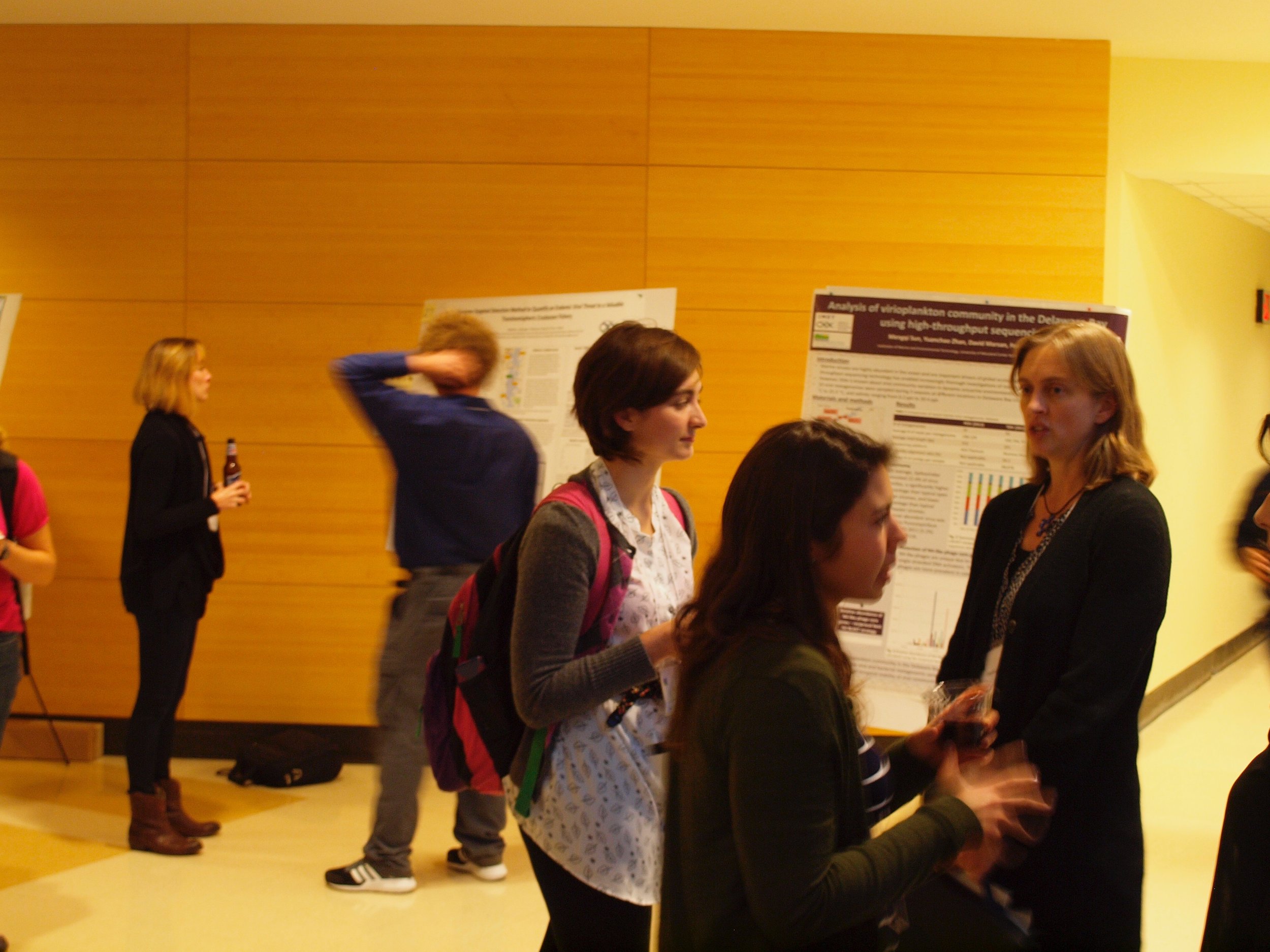



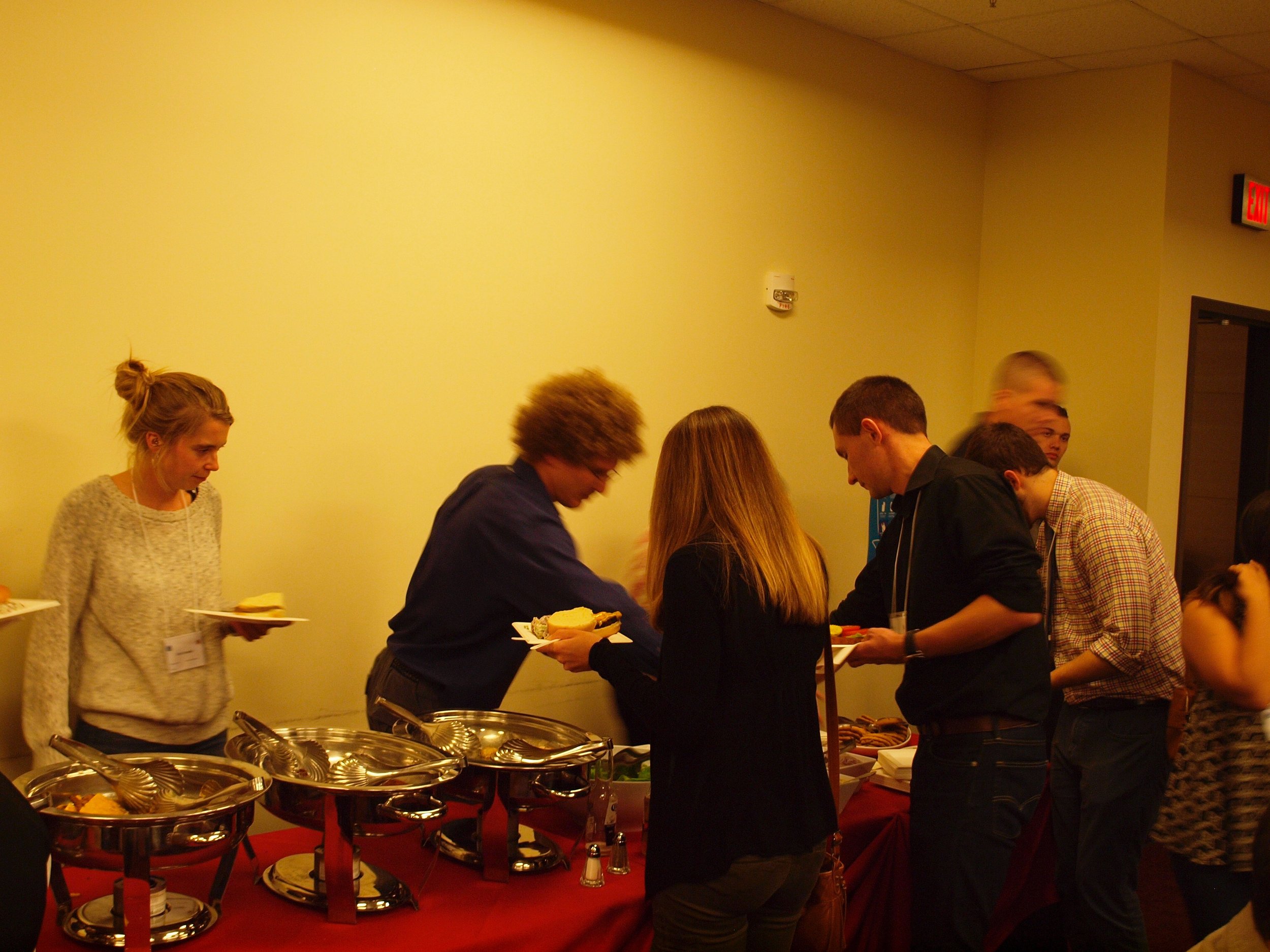
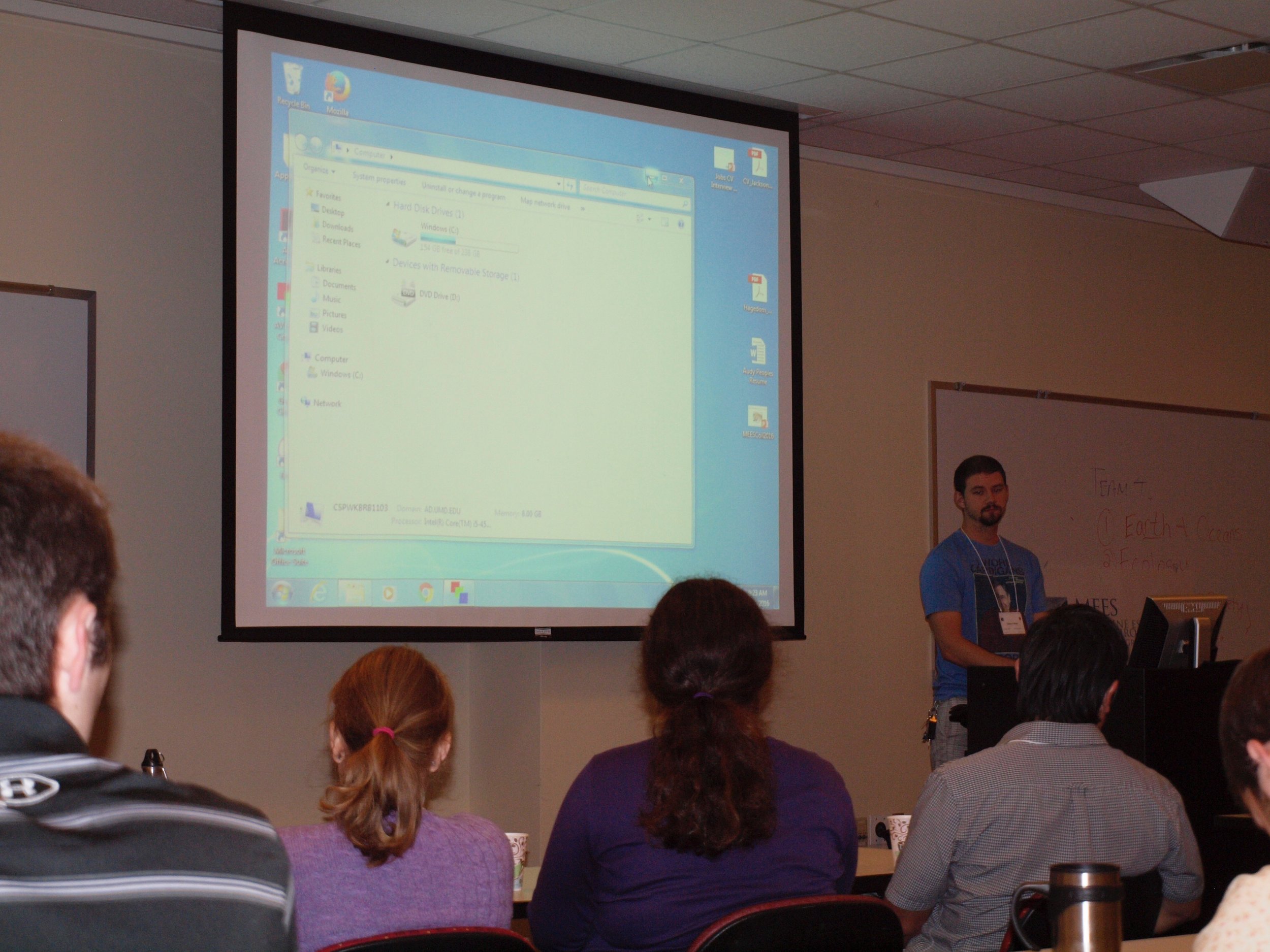



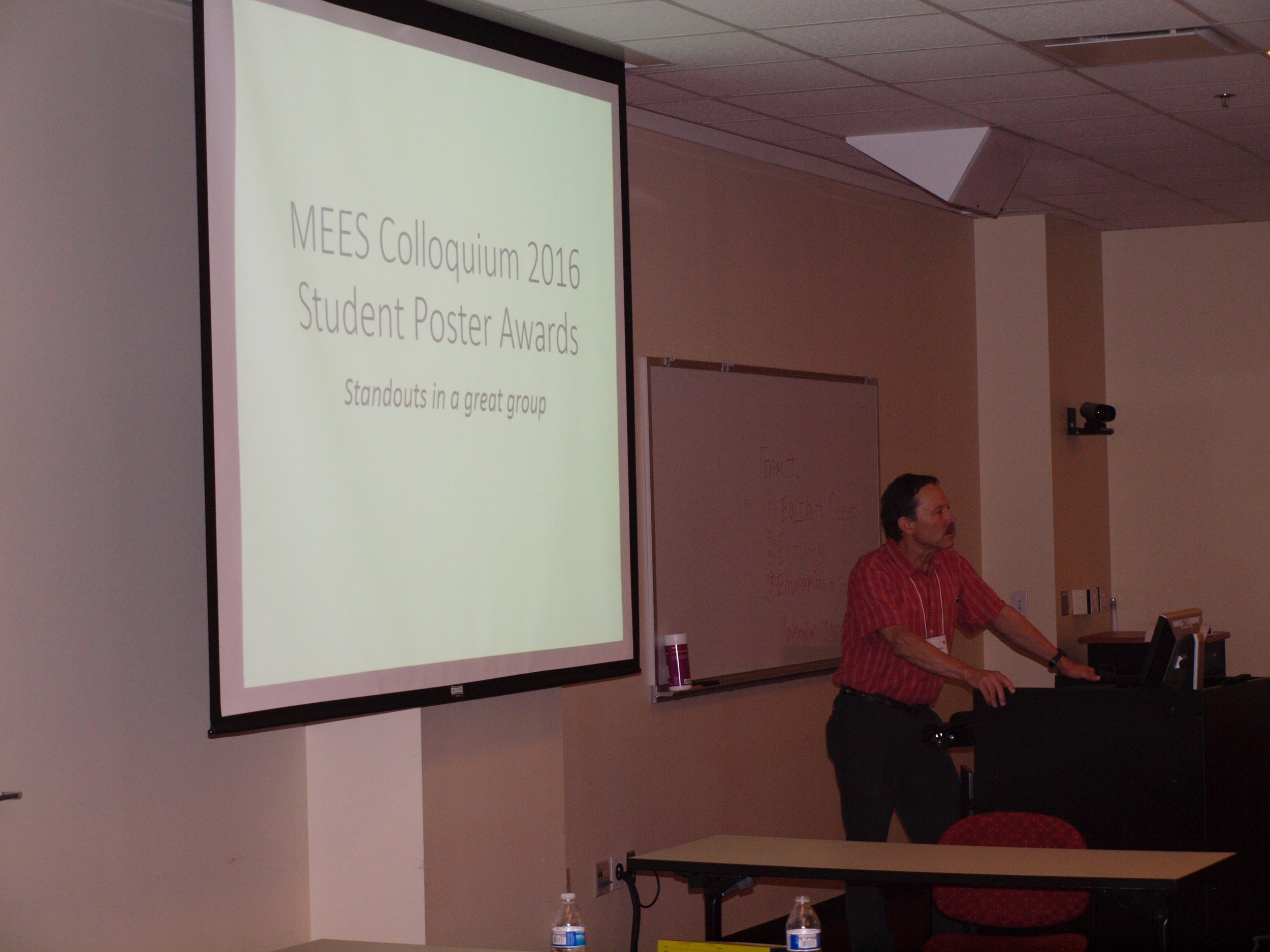
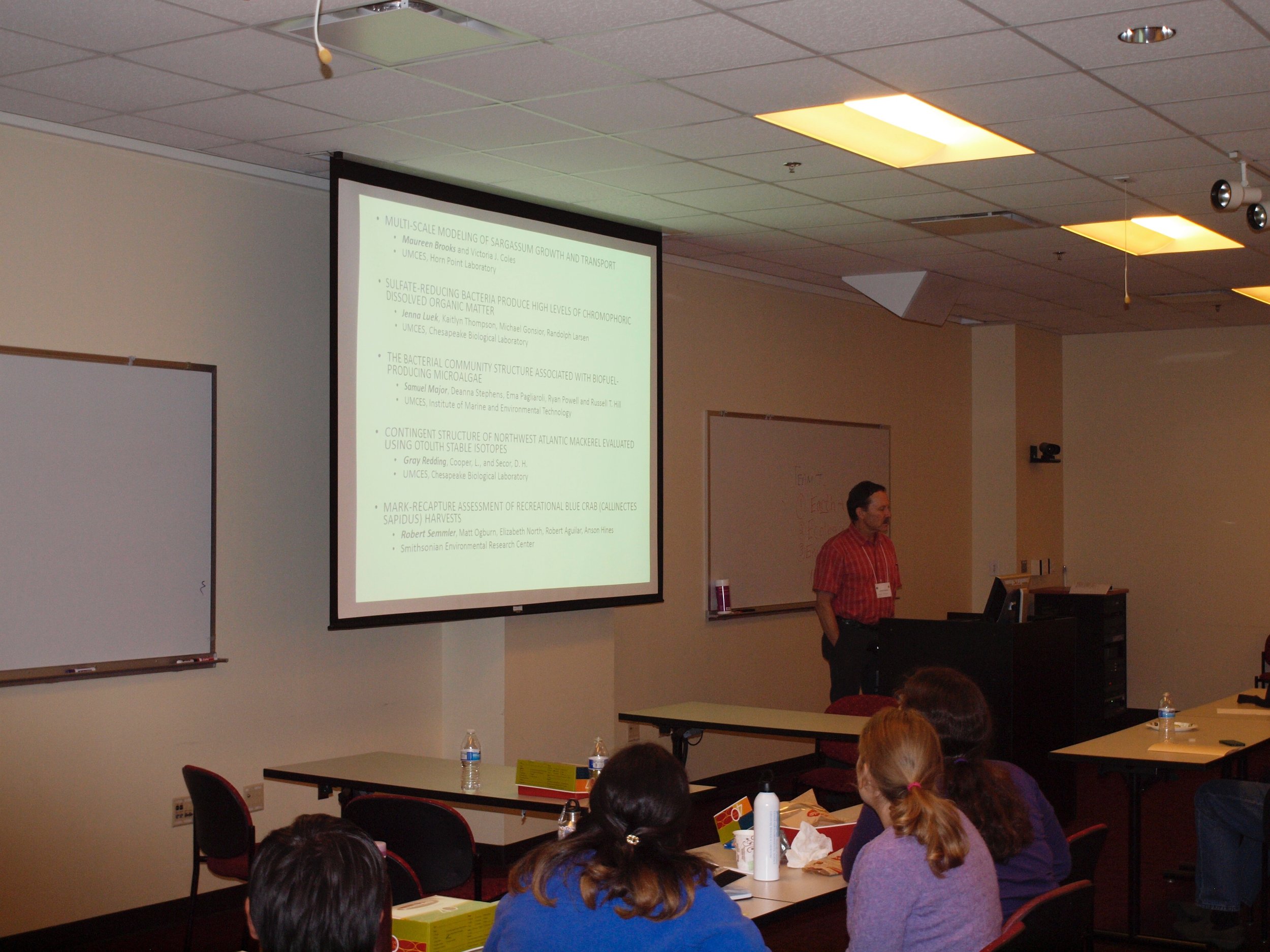



Every year the MEES Program holds an annual Colloquium. The colloquium is designed to promote interaction among the students and faculty of the program regardless of their site location. Third and fifth year students, both M.S. and Ph.D., are also given the opportunity to present their current research to their peers and faculty mentors.
This year the MEES Colloquium was held at the University of Maryland, College Park. Over 100 people attended the event, which spanned a weekend in October. Students were given the opportunity to share their research, hear from our invited guest, Mr. Jim Purdue of Purdue Farms, and experience College Park after dark.
We began the weekend with a warm welcome and certainly appreciated hearing more about the new curriculum from Dr. Tom Miller. This was followed by our Plenary Speaker Mr. Jim Purdue who explained more about chickens than anyone can imagine and even managed to tie it to MEES. It was a fascinating look into his world of providing chickens and pork to market and their work toward providing products the customer wants. There was so much more breadth to the Purdue business. Tom Miller stretched our thinking with asking us to apply what Jim Purdue presented with what MEES faculty and students see as interesting opportunities in possible research. Four teams presented their brainstorming on Saturday morning. The Colloquium concluded with Dr. Bill Dennison’s thoughts on successful interviewing.
Every year, MEES Faculty Members "judge" the student posters and presentations. This year, with 30 students presenting, faculty had a hard time selecting the "best". Therefore, we were able to award 5 very lucky winners each $250 for their academic achievements! This award winners and their abstracts this year are below:
MULTI-SCALE MODELING OF SARGASSUM GROWTH AND TRANSPORT
Maureen T. Brooks and Victoria J. Coles
Oceanography
Horn Point Laboratory, University of Maryland Center for Environmental Science
The pelagic macroalgae Sargassum fluitans and Sargassum natans are keystone species in the Atlantic Ocean and Gulf of Mexico, where they serve as habitat and forage for a diverse floating ecosystem. Recent Sargassum wash-ups along the coastline in the Caribbean highlight the need for improved understanding of this organism. The seasonal distribution of Sargassum throughout the tropics and subtropics established via satellite and ship-board observations is at odds with a basin-wide circulation that tends to aggregate buoyant material in the central North Atlantic Subtropical Gyre. Mesoscale features such as eddies can reconcile these differences by physically dispersing Sargassum and altering local growing conditions through nutrient upwelling. Using high performance computing, a series of four coupled models including ocean circulation, biogeochemistry, Lagrangian trajectories, and Sargassum physiology, were applied to examine the effects of eddies on Sargassum growth and dispersal.
SULFATE-REDUCING BACTERIA PRODUCE HIGH LEVELS OF CHROMOPHORIC DISSOLVED ORGANIC MATTER
Jenna Luek 2, Kaitlyn Thompson 1, Michael Gonsior 2, Randolph Larsen1
Environmental Chemistry
1. St. Mary's College of Maryland 2. University of Maryland Center for Environmental Science
Chromophoric dissolved organic matter (CDOM) is the optically active constituent of dissolved organic matter (DOM) and is found in all natural waters, including sediment pore waters. This CDOM is important to regulate light attenuation and to protect aquatic organisms from harmful UV radiation. It consists of a mixture of aromatic and conjugated π-electron systems and hence absorb ultraviolet (UV) and visible sunlight. A subset of these chromophores are fluorescent and are generally referred to as fluorescent DOM (FDOM). During early diagensis and under anaerobic conditions, sulfate reducing bacteria (SRB) reduce sulfate into inorganic sulfur species, such as hydrogen sulfide, polysulfides, sulfites and others. Surprisingly, we found FDOM being released during sulfate reduction. Detailed optical properties analysis during anaerobic incubation of lake sediments at different sulfate and acetate concentrations, revealed a very strong correlation (R2=0.98) between FDOM and sulfate reduction rates. The SRB fluorescent signal matched closely to that of humic-like material. We suggest that either the direct release of SRB metabolites or the hydrosulfurization of DOM caused the observed FDOM signals. This is the first evidence directly linking the production of FDOM with the process of sulfate reduction during early diagenesis of organic matter in anaerobic sediments.
THE BACTERIAL COMMUNITY STRUCTURE ASSOCIATED WITH BIOFUEL-PRODUCING MICROALGAE
1Samuel Major, 2Deanna Stephens, 3Ema Pagliaroli, 4Ryan Powell and 1Russell T. Hill
Environmental Molecular Biology/Biotechnology
1Institute of Marine and Environmental Technology, University of Maryland Center for Environmental Science
2University of Maryland, College Park
3Baltimore Polytechnic Institute
4Manta Biofuel LLC
Third generation biofuels made from microalgae are an attractive source of energy due to their rapid growth and ability to be grown in wastewater, salt water, or fresh water. Due to this production strategy, fuel consumption from algal biofuels are carbon-neutral. Bacterial communities associated with microalgae can provide fixed nitrogen and vitamins such as vitamin B12. Similarly, the bacterial communities use algal exudates for nutrition and consume O2 generated from microalgal photosynthesis. In collaboration with Manta Biofuel LLC, we set out to elucidate which bacterial communities are closely associated with the microalgae used to produce biofuels in large man-made outdoor ponds. Water samples were collected during algal blooms and serially filtered in order to capture the biologic fractions for 16S and 18S rRNA gene sequencing by Illumina Next Generation Sequencing. This approach provides insights into the microalgal and bacterial community structure, enabling us to relate community structure to the quality of oil produced from the biomass by hydrothermal liquefaction. Unfiltered water samples were cultured for bacterial and algal strain isolation. There were significant differences in the bacterial communities between fertilized and non-fertilized ponds, as well as a change in the communities over time. Culturing efforts have revealed several bacterial species that appear to enhance the growth of selected microalga strains suggesting the production of a compound by the bacteria that promotes microalgal growth. On-going analysis will link bacterial and algal community structure to the quality of oil produced. Microalgal and bacterial community analysis has applications in fresh-water and marine systems for enhancing microalgal biofuel production.
CONTINGENT STRUCTURE OF NORTHWEST ATLANTIC MACKEREL EVALUATED USING OTOLITH STABLE ISOTOPES
Gray Redding, Cooper, L., and Secor, D. H.
Fisheries Science
Chesapeake Biological Laboratory, University of Maryland Center for Environmental Science
Atlantic mackerel (Scomber scombrus) support an important commercial fishery and are prey for many larger species. Stock assessments for Northwest Atlantic mackerel currently assume a single stock, comprised of northern and southern contingents, with natal regions centered off coastal Nova Scotia and southern New England. We hypothesized that otolith δ18O and δ13C values could discriminate fish from these regions on the basis of hydrographic differences and help to retrospectively understand migration and contingent structure of mackerel. Archived otoliths from extensive libraries in both the United States (source: NMFS Northeast Fisheries Center) and Canada (source: Fisheries and Oceans Canada), as well as otoliths from Iceland (source: Marine Research Institute) were carefully milled to extract material corresponding to the first year of life. Initial investigation comparing solely US sourced otoliths from two subregions of the southern New England natal region did not reveal significant geographical variation in isotopic content, but interannual differences were observed that corresponded to trends in regional ocean warming and a shift in the Gulf Stream position. We are now extending these studies of isotopic variation geographically by analyzing otoliths from the northern natal region in Canada and the Icelandic outgroup.
MARK-RECAPTURE ASSESSMENT OF RECREATIONAL BLUE CRAB (CALLINECTES SAPIDUS) HARVESTS
Robert Semmler, Matt Ogburn, Elizabeth North, Robert Aguilar, Anson Hines
Ecology
Smithsonian Environmental Research Center (SERC)
In the Chesapeake Bay, commercial blue crab (Callinectes sapidus) harvests are monitored through mandatory, annual harvest reporting. However, no such monitoring system exists for the recreational sector, which exclusively targets male crabs. Recreational harvest has not been assessed in almost 15 years, and prior estimates, currently incorporated in the stock assessment model, may no longer be accurate. This study uses a large scale mark-recapture program to assess relative exploitation between the two fishing sectors in 15 harvest reporting areas of Maryland, then extrapolates outward to generate statewide estimates of the ratio of recreational to commercial harvest. It also incorporates a wealth of movement information, provided by marked-crab recovery locations, and uses this information to refine exploitation calculations in a novel manner. Results indicate broad spatial variation in recreational fishing, with a majority of recreational harvests coming from tributaries in upper sections of the Bay, such as the Miles, Patuxent, and Severn Rivers. Using two traditional methods to assess the ratio of recreational to commercial exploitation (uR / uC), values range from 0.112 to 0.142. Incorporating movement information into this calculation further refines this estimate, giving a ratio of 0.138. Considering that the ratio of recreational to commercial exploitation currently accounted for in the stock assessment model is 0.080, recreational harvests could be underestimated by approximately 73%. Incorporating these updated estimates into the stock assessment model would better account for the exploitation of male crabs in Maryland, and could result


































































